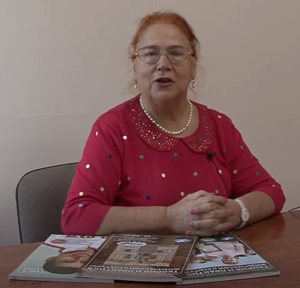Effectiveness of high-intense interval and continuous even training at the initial stage of preparation of young cyclists
ˑ:
Dr. Biol., Associate Professor I.A. Krivolapchuk1, 2
PhD, Associate Professor M.B. Chernova2
V.V. Myshyakov3
V.A. Ivanov4
1Moscow State University of Sport and Tourism, Moscow
2Institute of сhild development, health and adaptation, Moscow
3Yanka Kupala Grodno State University, Grodno, Belarus
4Grodno specialized children and youth school of Olympic reserve № 1, Grodno, Belarus
Objective of the study was to identify the effectiveness of high-intensity interval and continuous uniform training at the initial stage of training of young road cyclists aged 11-12 years.
Methods and structure of the study. Three groups of teenagers took part in the scientific work. In the first group, continuous uniform work was used for 20 minutes, in the second, high-intensity interval work. The control group included healthy, untrained schoolchildren. Physical condition was assessed based on a set of control exercises, functional and ergometric tests.
Results and conclusions. It has been established that continuous uniform and high-intensity interval loads have a pronounced effect on motor fitness, physical performance and muscle energy of young cyclists. An intergroup comparison revealed that changes in indicators of aerobic endurance, speed-strength and speed abilities under the influence of high-intensity interval work were the most significant.
Keywords: efficiency of continuous and interval work, subjective load severity, cycling.
References
- Barbosa L.F., Denadai B.S., Greco C.C. Endurance Performance during Severe-Intensity Intermittent Cycling: Effect of Exercise Duration and Recovery Type. Front Physiol. 2016. No.7. 602 p. doi: 10.3389/fphys.2016.00602.
- Buchheit M., Laursen P.B. High-intensity interval training, solutions to the programming puzzle: Part I: cardiopulmonary emphasis. Sports Med. 2013. No. 43(5). pp. 313-338.
- Colorni E., Ohayon E., Cote J.N., Obolski U., Halperin I. Should I Rest or Should I Go Now? A Randomized Cross-Over Trial Comparing Fixed and Self-Selected Rest Durations in High-Intensity Interval Training Cycling Sessions. Sports Med Open. 2023. No. 9(1). 52 p. doi: 10.1186/s40798-023-00601-8.
- Fennell C.R.J., Hopker J.G. The acute physiological and perceptual effects of recovery interval intensity during cycling-based high-intensity interval training. Eur J Appl Physiol. 2021. No. 121(2). pp. 425-434.
- Laursen P.B., Shing C.M., Peake J.M., Coombes J.S., Jenkins D.G. Influence of high-intensity interval training on adaptations in well-trained cyclists. J Strength Cond Res. 2005. No. 19(3). pp. 527-533.
- Martinez-Valdes E., Falla D., Negro F., Mayer F., Farina D. Differential Motor Unit Changes after Endurance or High-Intensity Interval Training. Med Sci Sports Exerc. 2017. No. 49(6). pp. 1126-1136.
- Milanovic Z., Sporis G., Weston M. Effectiveness of High-Intensity Interval Training (HIT) and Continuous Endurance Training for VO2max Improvements: A Systematic Review and Meta-Analysis of Controlled Trials. Sports Med. 2015. No. 45(10). pp. 1469-1481.
- Qu C.G., Tang Y.D. The effect of two different interval training on the aerobic capacity of elite road cyclists. Sport Sci. Res. 2019. No. 40(1). pp. 64-71.
- Seo M.W., Lee J.M., Jung H.C., Jung S.W., Song J.K. Effects of various work-to-rest ratios during high-intensity interval training on athletic performance in adolescents. Int. J. Sports Med. 2019. No. 40(8). pp. 503-510.



